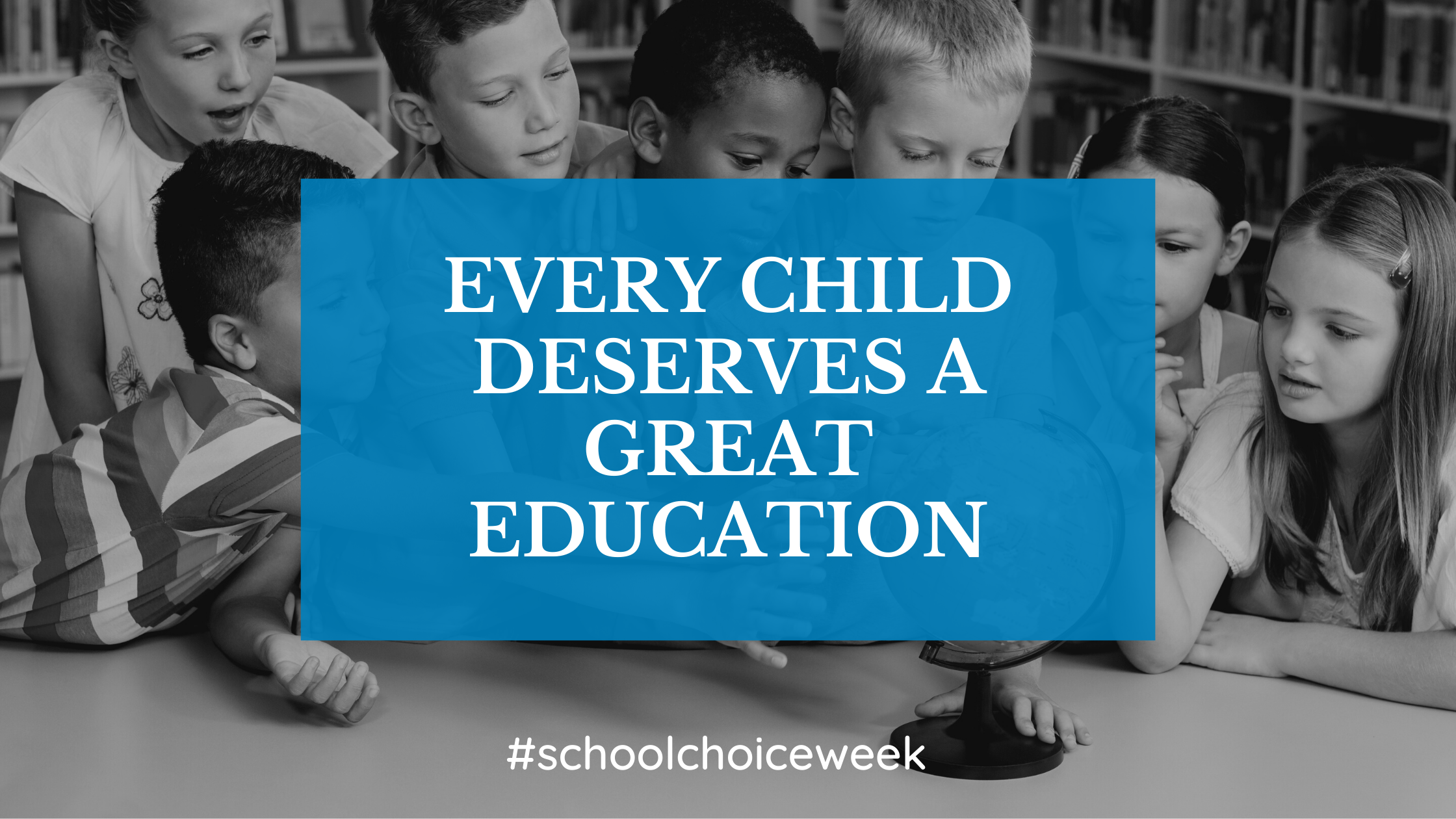National School Choice Week has arrived and what better time to highlight the importance of empowering families to choose the best educational options for their children. Too often, families are left out of discussions when it comes to choosing the best school to fit their child’s individual needs and most children are forced to attend their neighborhood school even if it’s underperforming or a poor fit. Schooling during the pandemic has made the benefit of having options even more clear, as some families believe their students thrive when learning in person, while other families want to keep their kids at home learning remotely.
It’s important to keep in mind that if we want students to reach their full potential, they need to be in a learning environment that is conducive to fostering success based on their learning needs; school is not a one-size-fits-all solution.
Having well-prepared students ready to succeed in college and the workforce is a critical component to the success of our economy. It’s important to keep in mind that if we want students to reach their full potential, they need to be in a learning environment that is conducive to fostering success based on their learning needs; school is not a one-size-fits-all solution. But, in order for this to happen, there must be laws and policies in place that enable school choice in the first place.
Each state has varying laws around school choice; 33 states and the District of Columbia allow students to attend any school within their district, while 44 states and DC allow students to attend schools outside their district. Meanwhile, 45 states have laws that allow charter schools. Though charter schools are often framed in controversy, parent demand at the local level suggests parents like having charter options available to them. This could be because charter schools are generally serving families well; data from a nationwide long-term study reveals links between high-quality charter school options and increased academic gains. Furthermore, charter schools serve traditionally underserved students well; students of color make up 68.7 percent of all charter school enrollees and low-income students compromise 59.3 percent, and studies show that these students outperform their peers in traditional neighborhood schools.
Yet, the option of attending a charter school is still out of reach for most students. While most big cities have at least some charter schools, charters only make up 6.5 percent of the total number of public schools. The vast majority of public school students are still attending traditional public schools where they are likely assigned to a neighborhood school.
Finally, there are ways to ensure that school choice, where implemented, works to further equity in education. Advocates should consider the following policies:
- Expand access for all students to existing high-quality, in-demand schools through enrollment preferences and lottery systems.
- Implement student-centered funding formulas that ensure funds follow the student, regardless of where they choose to attend school.
- Require districts to adopt open-enrollment policies that ensure families are able to access the best schools for their children’s needs, and include provisions for enrollment priorities, transportation, and allowing for full funding to follow the student.
We hope you join the #schoolchoiceweek conversation so that all students have the opportunity to thrive!
For more information, visit www.schoolchoiceweek.com




